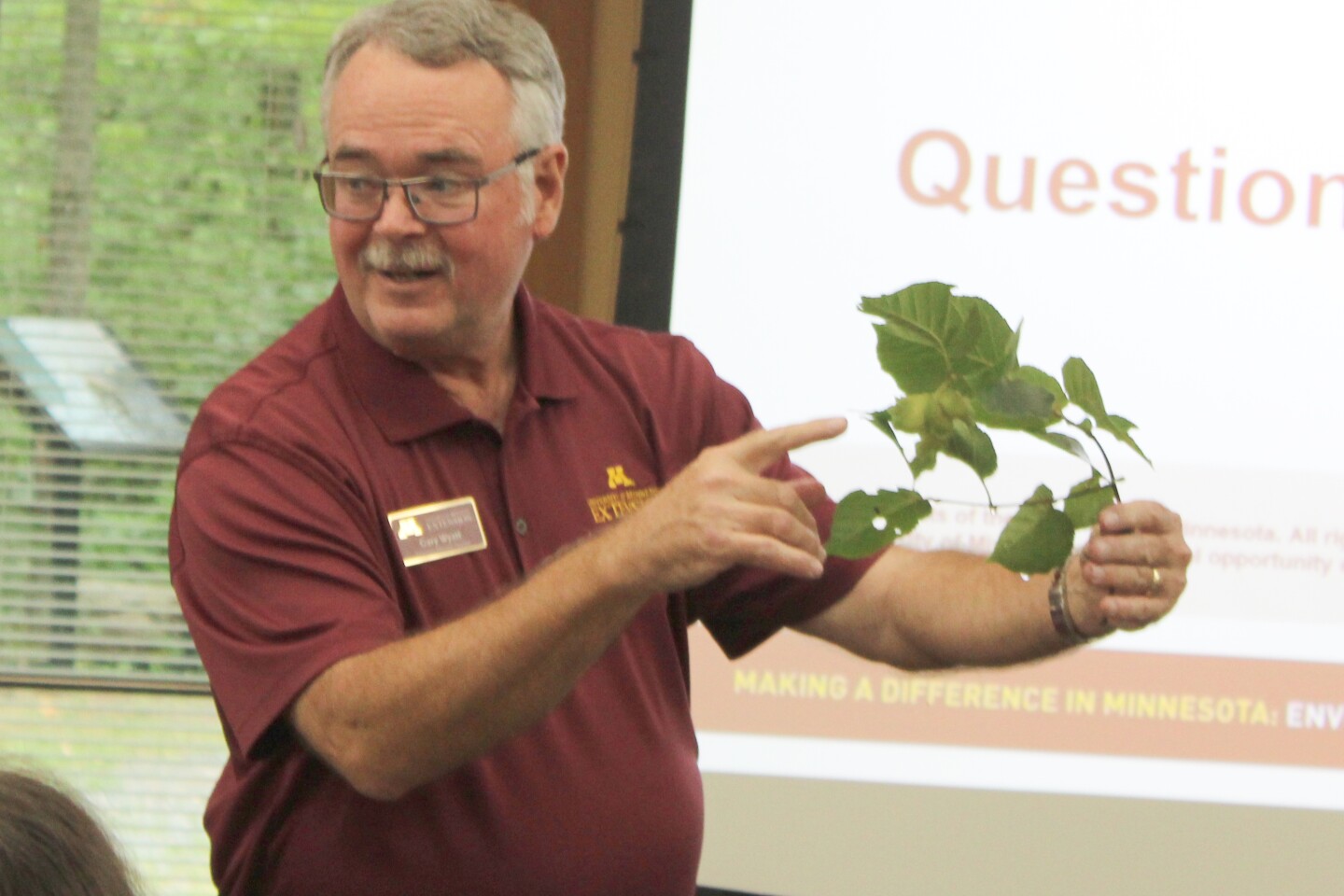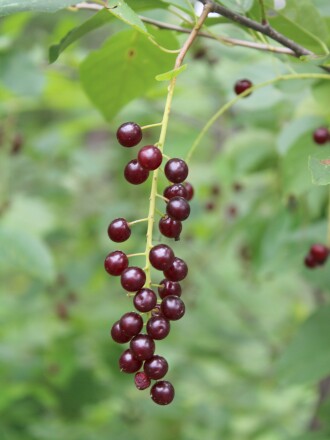Most Minnesotans are familiar with wild rice, maple syrup, blueberries and morel mushrooms.
But did you know that you can eat stinging nettles? Cattails? Hazelnuts? Ostrich fern fiddleheads? Or that plant common in driveways. It’s called plantain.
ADVERTISEMENT
There’s an impressive host of native fruits, nuts, mushrooms, saps and plants in the forest that may be harvested and digested.
The Hubbard County University of Minnesota Extension Office teamed up with Itasca State Park to teach the art of foraging for wild edibles in the Northwoods.
Gary Wyatt, a UMN Extension educator, discussed ethics and techniques for harvesting or growing them in home landscapes.

“Our goal is to give you a small taste of the many possible plants you can forage in Minnesota, while giving you the resources to stay safe,” he said.
The popular program attracted 68 attendees, according to Hubbard County UMN Extension education Tarah Young
Each participant received a copy of “Minnesota Harvester Handbook,” which is available for purchase at z.umn.edu/mhh.
Foraging rules
Harvesting edible fruits and mushrooms is allowed in Minnesota state parks and forests, as long as they are for personal consumption. Commercial harvesting is not allowed. No one is permitted to pick wildflowers or any other plants on state lands.
ADVERTISEMENT
Rule No. 1: Harvest only what you need. Think about sustainability and leave 80%, urged Wyatt.
Rule No. 2: Know what you’re picking. “If you don’t, don’t eat it,” Wyatt said.
There are lookalikes that are poisonous. Wild grapes make wonderful jams, pies, juices and wines, but there are three toxic impersonators: bittersweet nightshade, Virginia creeper and Canadian moonseed.
Then there are endangered plant species that shouldn’t be disturbed.
He recommended “The Forager's Harvest: A Guide to Identifying, Harvesting, and Preparing Edible Wild Plants” by Samuel Thayer.
Foragers also should be aware of how they can spread invasive species throughout the woodlands.
Rule No. 3: Always get permission. Respect private property and ask landowners for permission to harvest. Wyatt explained foragers must “know before they go” where and what they can pick.
ADVERTISEMENT
Potential hazards
Bacteria that cause foodborne illness – salmonella, lactobacillus, E. coli – are found naturally in soil, Wyatt warns.
Animal urine and feces may come in contact with plants as well.
Foragers must be aware of water runoff, which may carry pollutants. Ditches and farm fields are frequently sprayed with herbicides or pesticides, added Wyatt.Insects burrow or reside in wild foods. Spotted wing drosophila is a tiny fruit fly that loves ripening fruits.
Clean the food thoroughly and eat it in small quantities. The first time you eat chicken-of-the-woods mushrooms, for instance, don’t gorge on it, Wyatt said.
And, of course, gatherers must contend with poison ivy and wild parsnip.

You can eat that?
Minnesota is home to two varieties of hazelnuts: American and beaked.
ADVERTISEMENT
“If you can beat the squirrels and deer, you can get to some,” Wyatt said. Crack the shells to eat the innards.
Almost every part of the dandelion is edible and it's loaded with vitamins, Wyatt said.
Cattail spikes, while still green, may be boiled and eaten like corn-on-the-cob. Stems can be roasted, boiled or cooked. Roots can be baked like a potato, but peel it first, according to Wyatt.
There are 100 varieties of violets in Minnesota, and they may be eaten.
In early spring, wild onions are edible.
Of Minnesota’s 44 ferns, ostrich fiddlehead is the only one recommended for eating, typically in early spring.
The young shoots and tender top leaves of stinging nettle are “very good as a boiled green.” These also make a nourishing tea.
ADVERTISEMENT
Wyatt said many parts of daylilies may be eaten, but not all varieties.
Common plantain often grows along driveways and sidewalks.
Resources
Native Plant Community Classification: www.dnr.state.mn.us/npc/classification.html.
MN Mycological Society: minnesotamycologicalsociety.org
Ready to Fruit Mushrooms:
Edible fruits and nuts: z.umn.edu/edibles
University of Minnesota Extension: www.extension.umn.edu/garden/yard-garden/fruit
ADVERTISEMENT
Minnesota Seasons:












